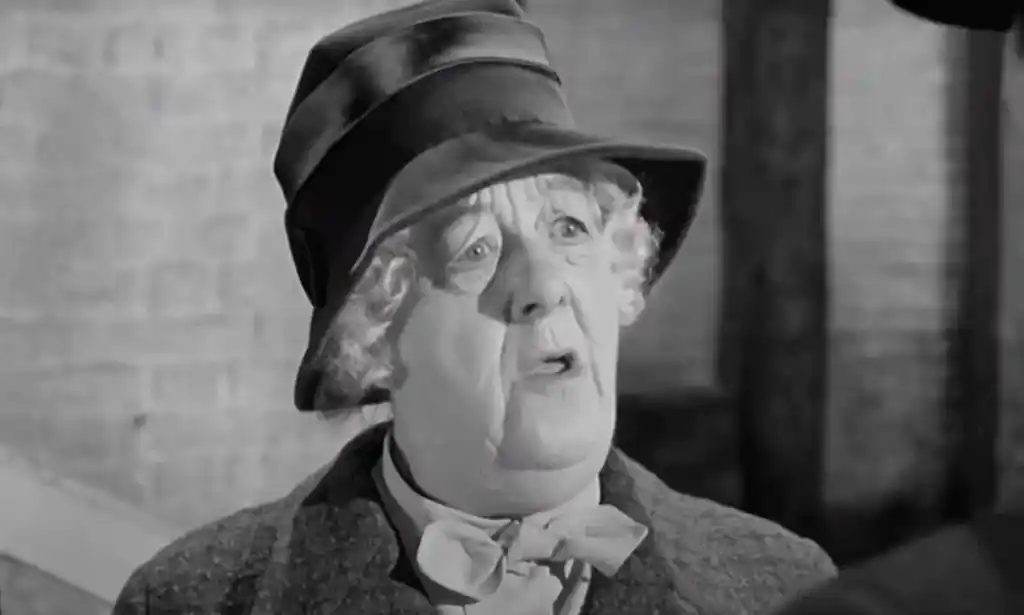Posted on May 02, 2024
Writing Cozy Mysteries: 7 Essential Tips & Tropes
About the author
Reedsy's editorial team is a diverse group of industry experts devoted to helping authors write and publish beautiful books.
More about the Reedsy Editorial Team →Isabella Peralta
A writer and editor, Isabella coordinates "Prompts," Reedsy's weekly short story competition. Originally from the Philippines, she is a graduate of the University of Cambridge.
View profile →Cozy mysteries, also known as “cozies,” are not new to the literary world. This subgenre of crime fiction has been around for almost a century now, with many considering Agatha Christie to be one of the first cozy mystery authors.
Unlike hard-boiled crime fiction, cozy mysteries typically don’t include profanity, graphic violence, and explicit sex scenes. It’s the perfect type of mystery novel to curl up with on a rainy day in bed.
With the rise of all things cozy, you’ve probably encountered — and maybe even thought about writing — cozy mysteries yourself. In this post, we’ll explore some tips and tropes for aspiring cozy mystery writers to keep in mind, providing several supporting examples from literature.
7 tips to write cozy mysteries:
🕵️♀️
Which mystery book should you read next?
Take our 1-minute quiz to find out!
1. The lead detective is seemingly ordinary
When you think of the word “detective,” what comes to mind? A tall man in a tweed suit with a pipe, à la Sherlock Holmes? A private detective with an iconic mustache, à la Hercule Poirot? In cozy mysteries, the lead detective is usually not a professional investigator; instead, you’ll find amateur sleuths who rely on their own unique skills to solve a case.
The lead detective of your story should be an everyday person-turned-aspiring investigator, and preferably someone who readers can easily relate to and sympathize with. Tons of cozy mysteries out there have ordinary protagonists with cozy jobs, from librarians and bakers to bookshop and café owners.
But in addition to being smart and resourceful, don’t forget that your protagonist should also be brave and passionate about solving the central case of your book. Since they don’t have any formal training, they need to show courage and ingenuity when faced with threatening situations, even if that means putting relationships with their friends and family on the line.

A popular example of a seemingly ordinary detective is Agatha Christie’s Miss Marple. This well-known character, who Christie describes as a “white-haired old lady with a gentle, appealing manner,” is not the first person the residents of St. Mary Mead would think of when it comes to solving a murder in their quaint village. But appearances can be deceiving — after all, sometimes the most brilliant detectives are the most unlikely ones.
Q: What makes for a compelling amateur detective in a cozy mystery?
Suggested answer
Two things: flaws and interests.
The heart of a brilliant cozy mystery detective isn't some superhuman Sherlock, but someone who is gloriously and messily human.
Let's start with flaws. These are more than quirks: they're genuine, complex imperfections that both hobble and drive our detective. Maybe they're spectacularly nosy but socially awkward. Perhaps they've got obsessive tendencies that make them brilliant at connecting dots, but absolute nightmares at maintaining relationships. Think Miss Marple's seemingly innocuous gossipy nature, which actually conceals razor-sharp psychological insight, or Agatha Raisin's brash, sometimes tactless approach which nonetheless gets results.
Interests: this is about giving your character authentic passions, rich backstories, and motivations that go way beyond just solving the crime. Retired librarian. Housewife with a secret passion for competitive ballroom dancing. Baker whose investigative skills were honed by baking wedding cakes requiring forensic-level precision.
The magic happens when their personal flaws become their investigative strengths. Their nosiness becomes networking. Their stubbornness transforms into persistent interrogation. Their outsider status gives them a perspective professional detectives might miss.
Sarah is available to hire on Reedsy ⏺
2. The setting should be charming and picturesque
One of the biggest appeals of a cozy mystery should be where it's set, a detail that Murder at Archly Manor author Sara Rosett considers to be an essential element of all good cozies. “Readers want to read about a cozy place, a cute small town, a quaint English village, or a quirky seaside community.”
Richard Osman’s The Thursday Murder Club, for example, is set in an idyllic (and fictional!) retirement village in England. It follows four elderly people who work together to solve local murders. Meanwhile, M.C. Beaton’s The Quiche of Death, which is the first book in the Agatha Raisin series, is set in the Cotswolds, a region in England known for its charming villages and market towns.

You can also set your cozy mystery in a unique building or establishment. For example, the second book in Agatha Christie’s Miss Marple series, The Body in the Library, is mostly set in a seaside resort, while H.Y. Hanna's The Oxford Tearoom Mysteries takes place in a traditional English tearoom and Ovidia Yu’s Aunty Lee's Delights series is mostly set in a beloved home-cooking restaurant in Singapore.
3. The crime should have stakes, but no gory details
Despite centering around murder and misdeeds, a cozy mystery shouldn’t include brutal or bloody scenes. All violent acts happen offstage, especially murders! The focus of the story should be on figuring out the interpersonal relationships that lie behind the crime, in addition to solving a perplexing case.
For example, in Abby Collette’s A Deadly Inside Scoop, ice cream shop owner Bronwyn “Wyn” Crewse encounters a dead body in the snow. Collette doesn’t go into any specific details regarding the corpse, and she makes it clear that Wyn doesn’t see this man get murdered — she merely discovers him while walking around her village.
The stakes are raised, however, when Wyn realizes that the dead man was a con artist with questionable ties to her family.
Q: What’s the secret to writing a non-gory yet thrilling crime scene?
Suggested answer
I think plausibility is thrilling to crime readers. The way a jacket bunches up during a fight scene, how a character handles their firearm, the precise progression of a rope abrading, fraying, then snapping during a rock climb: authenticity can be just as hair-raising as incredible plot circumstances.
Said another way: it's hard to thrill readers if they're skeptical of a scene's believability. When a reader trusts their author and how authoritatively the story is told, then they're more able to be immersed-- and thrilled-- by a story.
Kevin is available to hire on Reedsy ⏺
To keep the gore out of a crime scene, focus on, for example, the drawback of the hammer, the fact that the hammer hit the person's head, but not what the head looked like after the hammer connected. The reader can imagine the effect of a hammer to the head. I also think concentrating on how the victim and assailant felt during the violence is a strong way to convey the thrill without needing to describe the ensuing mess.
Brett is available to hire on Reedsy ⏺
4. The victim is often a villain
In murder mysteries, you’ll find that different kinds of people are killed, from protagonists’ loved ones to seemingly random strangers. However, in cozy mysteries, the victim is often portrayed as the “bad guy” or someone who has previously wronged the protagonist. To be clear, it’s not that all cozy mystery authors think these characters deserve to die, but when it comes to motive, cozies veer more on the side of past hurts or feelings like jealousy than psychopathic killing for the sake of killing.
In Mia P. Manansala’s bestselling novel Arsenic and Adobo, for example, 25-year-old Lila Macapagal moves back home after a bad breakup. Things take a turn for the worse when Derek, Lila’s cheating ex-boyfriend, drops dead in her family’s restaurant — after eating food that she has cooked. Lila must then find a way to prove her innocence once and for all.
5. Your detective’s greatest assets are their friends
While a protagonist can certainly attempt to crack a case on their own, it’d probably be more fun for them — and for the reader — if they had a trusty sidekick to keep them company. In addition to providing support, a good friend could also help your protagonist come up with ideas or find clues, making it slightly more believable that they’d be able to solve the case. In Arsenic and Adobo, Lila receives help from her Filipino aunties and her barista best friend Adeena to find her ex-boyfriend’s murderer, for instance.
Don’t forget that your protagonist can also have a non-human sidekick! Vaseem Khan’s The Unexpected Inheritance of Inspector Chopra is a great example of this. In the book, Inspector Ashwin Chopra finds unexpected help from Ganesh, a baby elephant he ends up inheriting out of the blue.

Annabel Chase, author of the paranormal cozy mystery series Starry Hollow Witches, similarly believes that animals “provide great opportunities for humor, compassion, threat detection, or simply someone the main character can talk to in order to avoid excessive inner monologuing.”
In fact, one of her most popular characters is Raoul, a raccoon sidekick who “shares a telepathic bond with the main character and is instrumental in helping solve the mysteries.” Inserting an animal companion like this is guaranteed to raise the coziness factor.
6. Always add red herrings
According to Benedict Brown, author of the Lord Edgington Investigates... series, the most underrated element of a cozy mystery — and the one that’s hardest to get right — is surprising your reader. “I love a really well-designed mystery plot, and some modern novels I read sacrifice a clever, twisting puzzle for the drama of the characters or setting. I think you need all three elements in sync to pull off the genre.”
As you write, don’t forget to include some details or clues that’ll mislead or distract the reader — these are also known as red herrings. By adding a few false leads, you’ll add more complexity to your mystery and characters, and if your reader manages to figure out who the villain is despite all the red herrings you throw their way, that could make for an even more satisfying read.

Moonshine & Magic author Bella Falls says that cozies “have one or two red herrings involved in the solving of the mystery, and sometimes those can be frustrating to create and easy to overlook. However, because a cozy mystery is just as much about the journey of solving the mystery, the red herrings are actually pretty important.”
“Also, red herrings give the reader something to consider while reading — it’s fun to get a reader to question if some bit of information the author provides is a red herring… or actually a big clue. In my opinion, red herrings are an essential, and often overlooked, element to the experience of enjoying a cozy mystery.”
Some examples of red herrings include seemingly authentic documents that point to a character’s innocence, the questionable whereabouts of a character when the victim’s death took place, and objects at the crime scene that turn out to be unrelated to the murder.
(Spoiler alert!) An example of a red herring in a popular cozy mystery involves the character Lawrence Redding in Agatha Christie’s Murder at the Vicarage. Redding confesses to the murder of the wealthy Colonel Protheroe, but he’s not charged with murder since he’s believed to have made his confession to protect the actual killer. It’s discovered that he was having an affair with Anne — Colonel Protheroe’s wife and the true murderer — and convinced her to kill Protheroe so she could inherit his wealth!
7. The good guys always win
No matter what happens throughout the course of your book, one thing should be for certain: your protagonist and their friends crack the case in the end. This is essential in a good cozy — after following your characters through a series of puzzling and tense situations, your reader should feel safe and comforted knowing that justice has been served.
If the villain is still running loose at the end of your story, you might want to reconsider whether your book is truly a cozy mystery…
And there you have it — 7 essential tips to remember as you work on your cozy mystery novels. Whether you’re a newbie to writing crime fiction or a self-proclaimed veteran of it, we hope you’ve learned something new by reading this post. But don’t forget — it’s up to you to figure out the unique elements that’ll make your story stand out from the rest. Try to come up with an unforgettable cast of characters, a protagonist with a job that’s idyllic yet rarely written about, or a setting that’s never been seen before in cozies… the possibilities are endless!








